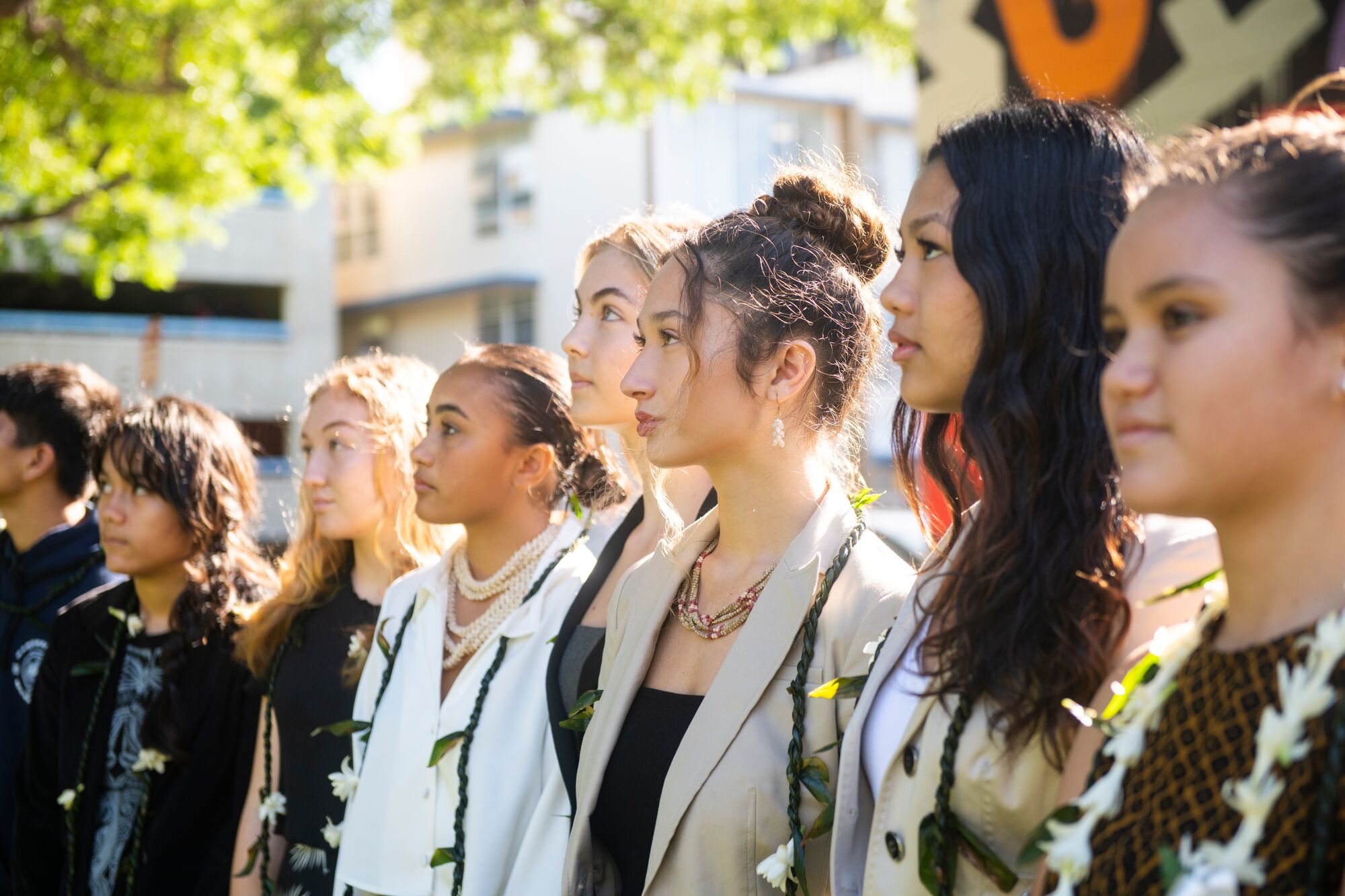State Plan to Reduce Transportation Emissions Released for Public Comment
This is a major early step in the recent settlement of Hawai‘i’s youth climate lawsuit, Navahine v. HDOT
Contacts
Andrea Rodgers, Senior Litigation Attorney, Our Children’s Trust, (413) 687-1668, andrea@ourchildrenstrust.org
Miranda Fox, Earthjustice, mfox@earthjustice.org
Helen Britto, Our Children’s Trust, (925) 588-1171, helen@ourchildrenstrust.org
Last Friday, the Hawai‘i Department of Transportation (HDOT) released the “Hawaiʻi Energy Security and Waste Reduction Plan” for public comment — a major milestone under the groundbreaking climate settlement agreement signed last year between Governor Green’s administration and 13 ‘ōpio (youth) who sued HDOT for failing to reduce climate-harming emissions on track with Hawai‘i’s legally mandated 2030 and 2045 deadlines.
“HDOT’s plan to reduce emissions from the transportation sector is a necessary first step in the journey towards climate justice for youth in Hawai‘i,” said Andrea Rodgers, Deputy Director of U.S. Strategy for Our Children’s Trust, who served as co-counsel for the youth plaintiffs in the Navahine lawsuit. “While this is just one component of the Navahine Settlement Agreement, the plan provides clear guidance and direction as to what strategies need to be implemented to protect children’s fundamental rights.”
The newly released plan lays out a wide range of strategies to help Hawai‘i achieve its zero emissions transportation goals by 2045, including electrification of ground transportation, more multi-modal transit options like protected bike lanes, and new sustainable alternatives for marine and long-haul air travel. Each year, HDOT will evaluate which strategies were most effective at reducing emissions and inequities in the transportation system. The iterative management approach allows HDOT to use this new data and steer future decisions toward the most effective strategies to meet the goals of the settlement agreement.
Since the settlement agreement was signed, HDOT has made significant progress, including forming a new leadership team headed by Laura Ka‘akua, prioritizing decarbonization efforts. The department has also developed a calculator tool to help prioritize projects that reduce “vehicle miles travelled,” a key metric in cutting transportation emissions. Additionally, HDOT launched the Youth Transportation Council — a new body created to ensure meaningful input from those who will inherit the consequences of today’s transportation policy decisions: Hawai‘i’s youth.
“I know what it means to try to get around O‘ahu on a budget, it is not easy,” said Kawika Pegram, a member of the Youth Transportation Council established by the settlement. “I am confident that these investments being made now in the alternatives to driving a gas car will pay out huge dividends for all of us, but especially the young people coming up behind me. There is no doubt that public transportation is the cheapest, safest, and cleanest way for us all to get around, from makule to ‘ōpio.”
The public has until July 27th to submit comments on the plan. Comments can be submitted through an online form or by attending a public hearing, details of which will be announced soon.
“I’m so excited to see HDOT following through on the terms of our settlement and releasing the draft plan,” said Navahine youth plaintiff Taliya. “I hope everyone will join me in reading it, sharing feedback, and getting involved. Now is the time to step up and support the transformation to a zero-emissions transportation system.”
“On the year anniversary of our historic settlement, it’s encouraging to see Hawai‘i’s head transportation agency moving forward with a comprehensive roadmap to decarbonize our transportation system,” said Isaac Moriwake, Managing Attorney for Earthjustice, and co-counsel for the youth plaintiffs in the Navahine lawsuit. “We look forward to the plan focusing and inspiring necessary actions, because we have no time to lose.”
The momentum in Hawai‘i toward clean transportation is real, though still lagging behind the pace necessary to meet the state’s decarbonization commitments. For example, Hawai‘i ranks among the top states in electric vehicle adoption, with registrations jumping nearly 50% in just two years. At the same time, gas-powered car registrations dropped by 1%. Yet the plan recognizes a critical gap — the state falls far short on electric vehicle (EV) charging infrastructure. That’s why public input is vital now, to ensure the strategies and investments further drive the changes already happening on the ground.
“This is a great opportunity for more people to get involved in this process, especially young people who want to protect their future,” said Kaliko T., a Lahaina resident and plaintiff in the Navahine lawsuit, who lost two homes to natural disasters that were made worse by climate change. “It is all of our kuleana to participate now so this plan will be stronger over the next 20 years. This investment in our future is worth it because nobody should have to go through what I’ve been through.”

Additional Resources
About Earthjustice
Earthjustice is the premier nonprofit environmental law organization. We wield the power of law and the strength of partnership to protect people's health, to preserve magnificent places and wildlife, to advance clean energy, and to combat climate change. We are here because the earth needs a good lawyer.